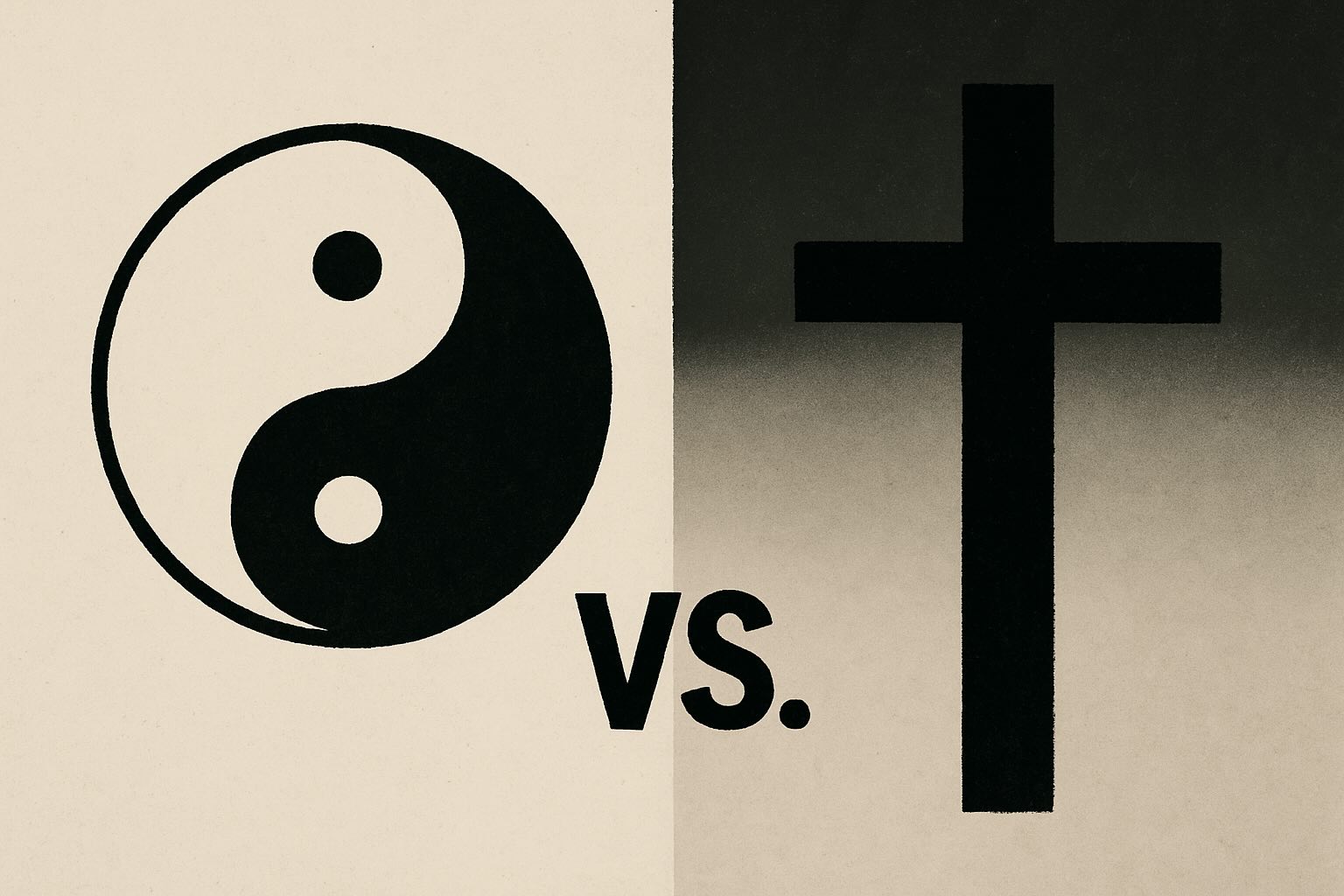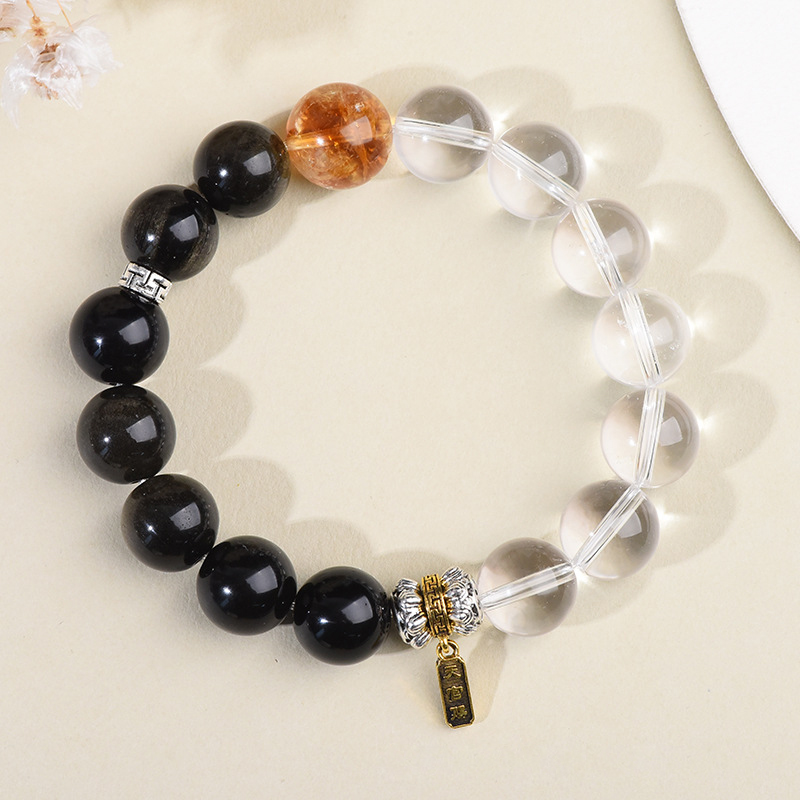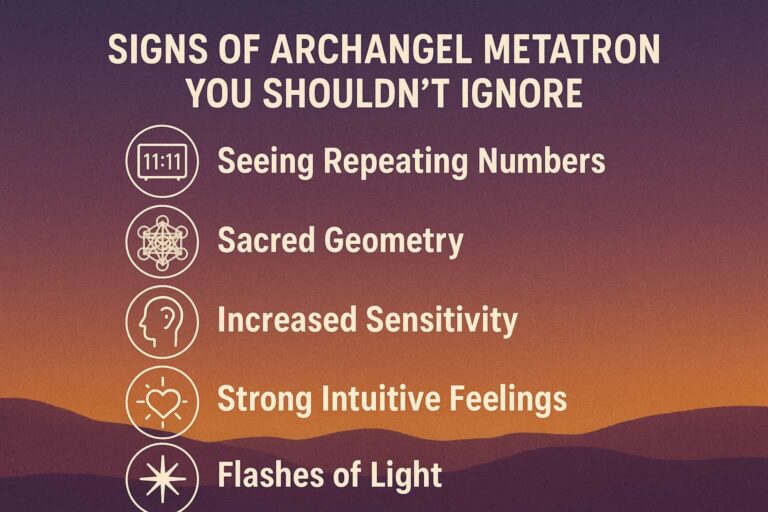Is Yin and Yang Against Christianity? The Ultimate Guide
The question “Is yin and yang against Christianity?” is one that many believers and spiritual seekers ask when exploring different philosophical and religious traditions. Understanding whether yin and yang is against Christianity requires careful examination of both systems. This comprehensive guide explores the relationship between yin and yang and Christian beliefs, addressing concerns about whether yin and yang against Christianity is a valid theological position. Many Christians wonder if yin and yang is against Christianity due to its Eastern origins, while others question whether embracing yin and yang concepts contradicts their faith. This article will help you determine if yin and yang is truly against Christianity or if these systems can coexist respectfully.
In this article
- 1 What Is Yin and Yang?
- 2 Christian Perspectives on Yin and Yang
- 3 Is Yin and Yang a Religion or Philosophy?
- 4 Historical Perspective: Christianity and Chinese Philosophy
- 5 Can Christians Use Yin and Yang Concepts?
- 6 Biblical Principles and Balance
- 7 Practical Guidelines for Christians
- 8 Yin Yang Bracelet Meaning and Christian Considerations
- 9 Alternative Christian Concepts
- 10 Cultural Context and Respect
- 11 Conclusion: Finding Your Path
- 12 Frequently Asked Questions
What Is Yin and Yang?
Yin and yang represent one of the foundational concepts in Chinese philosophy, particularly within Taoism. This ancient symbol depicts the idea of complementary opposites that work together to create balance and harmony in the universe. The concept suggests that seemingly opposite forces are actually interconnected and interdependent.
Key Characteristics of Yin and Yang:
- Yin: Represents feminine energy, darkness, passivity, receptivity, and coolness
- Yang: Represents masculine energy, light, activity, assertiveness, and warmth
- Balance: Neither force is superior; both are necessary for harmony
- Cyclical Nature: The forces continuously flow and transform into each other
Is Yin Yang Japanese?
A common misconception is that yin and yang originated in Japan. Yin and yang is not Japanese – it is fundamentally Chinese in origin. The concept emerged from ancient Chinese philosophy over 3,000 years ago and is deeply rooted in Chinese Taoist and Confucian traditions. While Japan has adopted and adapted many Chinese philosophical concepts through cultural exchange, yin and yang (known as “in-yo” in Japanese) remains essentially Chinese in its origins and primary development.
Yin Yang Fish Meaning
The iconic yin yang symbol features two curved sections that resemble fish swimming in a circle, which is why they’re often called “yin yang fish.” The yin yang fish meaning represents the eternal dance of opposing forces:
- The curved boundary between the two sections shows that the division is not rigid but flowing
- Each “fish” contains a small circle of the opposite color, representing how each force contains the seed of its opposite
- The swimming motion implied by the shape suggests constant movement and transformation
- The interlocking design demonstrates how opposite forces are interdependent and cannot exist without each other
This fish-like appearance emphasizes that balance is not static but dynamic, constantly flowing between different states while maintaining overall harmony.
 Christian Perspectives on Yin and Yang
Christian Perspectives on Yin and Yang
The relationship between yin and yang philosophy and Christianity varies significantly among different Christian denominations and individual believers. When examining whether yin and yang is against Christianity, we must consider multiple Christian viewpoints. Understanding these varying perspectives is crucial to answering whether yin and yang is against Christianity from a theological standpoint.
Conservative Christian Viewpoint
Many conservative Christians view yin and yang as incompatible with their faith, firmly believing that yin and yang is against Christianity for several theological reasons. Those who argue that yin and yang is against Christianity often point to concerns about spiritual compromise and doctrinal purity.
Theological Concerns:
- Monotheism vs. Apparent Dualism: Christians emphasize God’s absolute uniqueness (“You shall have no other gods before Me” – Exodus 20:3), while yin and yang appears to suggest dual opposing forces. However, this concern often stems from misunderstanding – yin and yang actually describes complementary unity, not competing deities.
- Absolute Truth vs. Relativism: Christianity teaches absolute moral standards, while some interpret yin and yang as promoting moral relativism. Yet yin and yang describes natural processes, not moral equivalencies.
- Worship Concerns: The primary biblical concern is idolatry – worshipping creation rather than the Creator (Romans 1:25). If yin and yang becomes an object of worship or spiritual authority, it conflicts with the First Commandment.
Biblical Interpretation: Conservative Christians correctly emphasize that nothing should replace God as the ultimate authority and object of worship. The key question becomes: “Is yin and yang being used as descriptive language for God’s natural order, or as a replacement for God’s authority?”
Progressive Christian Viewpoint
Other Christians take a more open approach to yin and yang, disagreeing with the position that yin and yang is against Christianity. These believers don’t automatically assume that yin and yang is against Christianity and instead look for ways these concepts might complement their faith.
Compatibility Arguments:
- Natural Law Recognition: Christianity acknowledges natural laws as God’s design (Romans 1:20: “For his invisible attributes… have been clearly perceived, ever since the creation of the world, in the things that have been made”). Yin and yang can serve as philosophical language describing these natural patterns.
- Biblical Balance Concepts: Scripture contains numerous examples of complementary principles working together – mercy and justice, faith and works, rest and labor. Yin and yang provides vocabulary for discussing these biblical balances.
- Cultural Contextualization: Just as Paul became “all things to all people” (1 Corinthians 9:22), using familiar cultural concepts like yin and yang can help communicate biblical truths about balance and harmony.
Key Safeguards: Progressive Christians who engage with yin and yang concepts typically maintain clear boundaries:
- Scripture remains the ultimate authority for truth and morality
- Yin and yang serves as descriptive tool, not prescriptive spiritual practice
- God remains the Creator of natural laws that yin and yang describes
- No worship or spiritual dependence is placed on yin and yang concepts
Is Yin and Yang a Religion or Philosophy?
Understanding whether yin and yang constitutes a religion or philosophy is essential when evaluating its compatibility with Christianity. The question of whether yin and yang is against Christianity often depends on how we categorize this ancient concept. Many Christians who believe yin and yang is against Christianity do so because they view it primarily through a religious lens rather than a philosophical one.
Yin and Yang as Natural Philosophy
At its core, yin and yang is a natural philosophy concept that describes the universal law of opposing unity and dynamic balance – such as day and night, hot and cold, expansion and contraction. This philosophical framework:
- Describes natural patterns without involving deities or creation theology
- Explains cosmic order through observable phenomena rather than supernatural beliefs
- Functions as descriptive language for natural laws that Christians can acknowledge as God’s created order
- Remains neutral about spiritual worship or ultimate truth claims
Key Distinction: Yin and yang describes “how” natural processes work, not “who” created them or “what” should be worshipped.
When Yin and Yang Becomes Religious
However, yin and yang takes on religious dimensions when:
- Taoism assigns it spiritual significance and worship practices
- Folk religion treats it as a source of spiritual power or protection
- New Age movements use it for metaphysical or occult purposes
- Pantheistic interpretations view it as divine rather than descriptive
The Critical Distinction for Christians
The fundamental question is not whether yin and yang exists as a natural pattern, but whether it becomes an object of worship or ultimate authority. This distinction helps Christians understand that:
- Observing natural balance ≠ Worshipping natural forces
- Using descriptive language ≠ Adopting religious beliefs
- Appreciating created order ≠ Replacing the Creator
Historical Perspective: Christianity and Chinese Philosophy
Understanding the historical relationship between Christianity and Chinese philosophical concepts like yin and yang provides important context for modern discussions about whether yin and yang is against Christianity.
Early Missionary Approaches (Ming-Qing Period)
Cultural Adaptation Strategy:
- Matteo Ricci (1552-1610) and other Jesuit missionaries adopted a “cultural accommodation” approach when bringing Christianity to China
- They translated “God” as “Shangdi” (上帝) or “Tianzhu” (天主), using existing Chinese concepts for the divine
- However, they deliberately avoided engaging with indigenous philosophical concepts like yin and yang, focusing instead on Confucian ethics and terminology
- This cautious approach reflected concerns about syncretism while seeking cultural bridges
The Rites Controversy: The famous “Chinese Rites Controversy” (17th-18th centuries) centered on whether Chinese Christians could maintain traditional practices. While this didn’t directly address yin and yang, it established important principles:
- Distinguishing between cultural practice and religious worship
- Evaluating whether practices compromise core Christian doctrines
- Recognizing the difference between philosophical concepts and spiritual allegiances
Modern Contextualization
Contemporary Chinese Christianity:
- Contextualization approach: Modern Chinese Christians often distinguish between yin and yang as philosophical vocabulary versus religious practice
- Practical applications: Many Chinese Christians comfortably use yin and yang concepts when discussing Traditional Chinese Medicine (TCM) or natural phenomena, while clearly separating this from their worship and spiritual authority
- Cultural identity: Chinese Christians can appreciate yin and yang as part of their cultural heritage without compromising their faith in Christ
Key Principle Established: The historical experience demonstrates that the critical issue is not the cultural or philosophical concept itself, but whether it becomes an object of spiritual dependence or worship that replaces Christ’s authority.
Yin and Yang in Buddhism and Taoism
The influence of yin and yang philosophy extends deeply into major Eastern religions, which explains why some Christians are concerned about whether yin and yang is against Christianity:
Buddhism and Yin Yang: While Buddhism originated in India, as it spread to China, it absorbed and integrated yin and yang concepts:
- Buddhist Middle Way philosophy aligns with yin and yang’s emphasis on balance
- Chinese Buddhist temples often incorporate yin and yang symbolism
- Buddhist meditation practices in China sometimes reference balancing opposing forces
- The concept of interdependence in Buddhism resonates with yin and yang’s interconnectedness
Taoism and Yin Yang: Yin and yang is fundamental to Taoist religious practice:
- Taoist scripture (Tao Te Ching) extensively discusses the interplay of opposites
- Taoist meditation focuses on balancing yin and yang energies within the body
- Taoist cosmology explains the creation of the universe through yin and yang interaction
- Taoist alchemy and internal energy practices are based on harmonizing these forces
- Taoist martial arts like Tai Chi embody yin and yang principles in movement
Critical Understanding for Christians: This religious integration explains why determining whether yin and yang is against Christianity requires careful distinction between:
- Yin and yang as natural philosophy (describing observable patterns)
- Yin and yang as religious practice (spiritual cultivation, worship, or ultimate authority)
The concern is not with acknowledging natural patterns of balance, but with any practice that assigns spiritual power to yin and yang or uses it as a substitute for dependence on God.
Can Christians Use Yin and Yang Concepts?
The answer to whether Christians can incorporate yin and yang concepts depends largely on their position regarding whether yin and yang is against Christianity. Christians who don’t believe yin and yang is against Christianity may find ways to appreciate certain aspects while maintaining their faith priorities.
The Fundamental Test: Worship and Ultimate Authority
The biblical principle for evaluating any concept is simple: Does it replace God as the object of worship or ultimate authority? This test, rooted in the First Commandment, helps Christians determine appropriate boundaries.
Acceptable Applications:
✅ Describing natural phenomena: “The seasons demonstrate yin and yang balance that God created”
✅ Medical discussions: “TCM uses yin and yang terminology to describe bodily functions”
✅ Cultural appreciation: “I understand this art represents traditional Chinese philosophy”
✅ Educational purposes: “Learning about different worldviews helps me understand other cultures”
Problematic Applications:
❌ Spiritual guidance: “I consult yin and yang principles to make life decisions”
❌ Worship or devotion: “I meditate on yin and yang for spiritual enlightenment”
❌ Ultimate authority: “Yin and yang teaches me truth about reality”
❌ Replacing Scripture: “Yin and yang provides better guidance than the Bible”
Acceptable Applications for Many Christians:
1. Natural Philosophy and Science Using yin and yang to understand natural cycles, seasons, and biological rhythms without attributing spiritual power to the concept itself. Christians can appreciate that God created natural laws that include complementary patterns.
2. Cultural and Historical Understanding
Appreciating the cultural significance of yin and yang in Chinese civilization, art, and literature as part of understanding God’s diverse creation and human cultures.
3. Medical and Health Applications Many Chinese Christians comfortably use Traditional Chinese Medicine (TCM) that employs yin and yang terminology to describe bodily functions, while clearly distinguishing this medical language from spiritual practice.
4. Personal Balance Principles Applying principles of balance in practical areas like work-life harmony and emotional regulation, while deriving ultimate guidance from Scripture rather than yin and yang philosophy.
Problematic Applications for Christians:
1. Spiritual Practice and Worship Using yin and yang as a basis for meditation, prayer, or spiritual guidance that replaces or competes with Christian practices. This violates the First Commandment’s prohibition against having other gods.
2. Ultimate Truth Claims Treating yin and yang as a source of ultimate truth about reality, morality, or spiritual matters rather than recognizing Scripture as the final authority.
3. Metaphysical Dependence Attributing supernatural power to yin and yang concepts or relying on them for spiritual protection, guidance, or transformation.
4. Syncretistic Theology Attempting to merge yin and yang philosophy with Christian theology in ways that compromise the uniqueness of Christ or the authority of Scripture.
Biblical Principles and Balance
Christianity does acknowledge the importance of balance in various forms:
Biblical Examples of Balance:
- Ecclesiastes 3:1-8: “To everything there is a season…”
- Matthew 5:7: The balance between mercy and justice
- James 2:14-26: The relationship between faith and works
- Galatians 5:22-23: The fruits of the Spirit representing balanced character traits
Christian Concepts of Complementarity:
- Male and female as complementary (Genesis 1:27)
- Different spiritual gifts working together (1 Corinthians 12)
- The relationship between Old and New Testament
- Grace and truth in Jesus Christ (John 1:14)
Practical Guidelines for Christians
If you’re a Christian wondering how to approach yin and yang concepts, consider these practical guidelines:
Questions to Ask Yourself:
- What is my motivation? Are you seeking wisdom for practical living or spiritual guidance that might compete with your faith in Christ?
- How am I applying it? Are you using it as a tool for understanding balance, or as a spiritual practice?
- Does it align with Scripture? Does your application contradict or enhance your understanding of biblical truth, and does it support your conclusion about whether yin and yang is against Christianity?
- What is the source of authority? Are you looking to yin and yang or to God and His Word for ultimate guidance when determining if yin and yang is against Christianity?
Recommended Approach:
For Conservative Christians: Focus on biblical principles of balance and harmony rather than adopting yin and yang terminology or concepts.
For Progressive Christians: If you choose to engage with yin and yang concepts, maintain clear boundaries between philosophical appreciation and spiritual practice, always prioritizing biblical truth.
Yin Yang Bracelet Meaning and Christian Considerations
Many people today wear yin yang jewelry, including bracelets, as fashion statements or personal reminders. Understanding the yin yang bracelet meaning is important for Christians considering such accessories:
Traditional Yin Yang Bracelet Symbolism:
- Personal balance reminder: Wearing it as a daily reminder to seek harmony in life
- Energy balancing: Some believe it helps balance internal energies
- Protection symbol: Used as a spiritual protective charm in some traditions
- Meditation aid: Serves as a focal point for meditation on balance
- Fashion statement: Simply worn for aesthetic appeal without spiritual meaning
Christian Considerations for Yin Yang Jewelry:
Questions to Consider:
- What does wearing this symbol communicate about your beliefs to others?
- Are you comfortable with the spiritual associations others may have with this symbol?
- Does wearing it align with your church community’s understanding of appropriate Christian lifestyle?
- What is your personal motivation for wearing yin yang jewelry?
- Biblical symbol jewelry: Consider Christian symbols like the cross, fish, or dove
- Scripture-based reminders: Jewelry with biblical verses about balance and wisdom
- Cultural appreciation: Wear it purely as artistic appreciation while being prepared to explain your Christian worldview if asked
Alternative Christian Concepts
Christians seeking balance and harmony might consider these biblical alternatives to yin and yang:
Biblical Concepts of Balance:
- Wisdom and Understanding (Proverbs)
- Grace and Truth (John 1:14)
- Justice and Mercy (Micah 6:8)
- Faith and Works (James 2)
- Rest and Work (Sabbath principles)
Christian Approaches to Harmony:
- Prayer and meditation on Scripture
- Seeking God’s wisdom for life decisions
- Building community and relationships based on biblical principles
- Practicing spiritual disciplines for personal growth
Cultural Context and Respect
When discussing yin and yang in relation to Christianity, it’s important to maintain respect for Chinese culture and philosophy while being true to your own faith convictions.
Respectful Engagement:
- Acknowledge the cultural and historical significance of yin and yang
- Avoid dismissive or condescending attitudes toward Eastern philosophy
- Recognize the difference between cultural appreciation and religious practice
- Engage in thoughtful dialogue rather than quick judgments
Conclusion: Finding Your Path
The question “Is yin and yang against Christianity?” doesn’t have a simple yes or no answer. Whether yin and yang is against Christianity depends largely on:
- How you use it: As descriptive language for natural patterns, or as spiritual authority and worship
- Your theological understanding: Whether you maintain God’s absolute sovereignty and uniqueness
- Your church community’s guidance: Different denominations have varying approaches to cultural concepts
- Your motivation: Whether you seek to understand culture/nature, or to find spiritual alternatives to Christian faith
The Biblical Standard: The First Commandment The ultimate test is Exodus 20:3: “You shall have no other gods before Me.” Yin and yang itself is not against Christianity when it remains a philosophical description of natural patterns that God created. It becomes problematic only when it replaces God as an object of worship, spiritual dependence, or ultimate authority.
For Conservative Christians who believe yin and yang is against Christianity: Focus on rich biblical principles of balance, harmony, and complementarity that achieve the same insights:
- Ecclesiastes 3:1-8 – “To everything there is a season”
- Biblical wisdom literature – Practical guidance for balanced living
- Jesus’s teachings – Perfect example of divine balance (grace and truth, mercy and justice)
For Christians who don’t believe yin and yang is against Christianity: Proceed with wisdom and clear boundaries:
- Maintain Scripture as ultimate authority for all spiritual and moral questions
- Use yin and yang as descriptive vocabulary for natural or cultural phenomena
- Avoid any form of spiritual dependence on yin and yang concepts
- Be prepared to explain your Christian worldview when using such terminology
For All Christians: Remember that the goal is not winning debates about cultural concepts, but living lives that honor God and effectively love others. Whether you conclude that yin and yang is against Christianity or compatible with it, focus on:
- Growing in Christ-like character and biblical wisdom
- Building bridges with people from different cultural backgrounds
- Maintaining clear Christian identity while showing cultural sensitivity
- Seeking God’s guidance through prayer and Scripture study
The Heart of the Matter: The question isn’t really whether yin and yang is against Christianity, but whether anything competes with Christ for our worship, dependence, and ultimate loyalty. As long as Jesus remains Lord and Scripture remains our final authority, Christians can navigate cultural concepts with wisdom and grace.
Frequently Asked Questions
Q: Is yin and yang against Christianity according to the Bible?
A: Different Christians interpret this differently. Some believe biblical passages about avoiding other spiritual systems mean yin and yang is against Christianity, while others see it as compatible philosophical wisdom that doesn’t contradict Scripture.
Q: Why do some Christians think yin and yang is against Christianity?
A: They may be concerned about its origins in non-Christian religions, worry about spiritual compromise, or believe it promotes relativism rather than absolute biblical truth.
Q: Can I believe yin and yang is not against Christianity and still be a faithful Christian?
A: Many Christians hold this view, seeing yin and yang as philosophical wisdom rather than religious practice. However, this varies by denomination and individual conviction.
Q: Is Traditional Chinese Medicine compatible with Christianity?
A: Many Christians use TCM for health purposes while being cautious about its spiritual elements. The key is discerning what aspects are medical versus metaphysical.
Q: What do different denominations say about Eastern philosophy?
A: Views vary widely. Catholic, Orthodox, Protestant denominations, and individual churches all have different approaches to engaging with non-Christian philosophical systems.
Q: Is it okay to wear a yin yang bracelet as a Christian?
A: This depends on your personal convictions, your motivation for wearing it, and your church community’s guidance. Some view it as harmless fashion, while others prefer to avoid symbols associated with non-Christian spiritual systems.
Q: Is yin yang Japanese or Chinese?
A: Yin and yang is Chinese in origin, not Japanese. While Japan has incorporated many Chinese philosophical concepts, yin and yang originated in ancient Chinese philosophy over 3,000 years ago.
Q: What does the yin yang fish symbol mean?
A: The fish-like shapes in the yin yang symbol represent the flowing, dynamic nature of balance. They show how opposing forces swim together in eternal harmony, each containing the seed of its opposite.
Q: How can I achieve balance in life as a Christian?
A: Focus on biblical principles like the fruit of the Spirit, wisdom literature in Proverbs and Ecclesiastes, and Jesus’s teachings about priorities and relationships.
Remember, whether or not you incorporate yin and yang concepts into your worldview, the call to live a balanced, wise, and harmonious life remains central to Christian discipleship. The path you choose should ultimately draw you closer to God and enable you to love and serve others more effectively.


 Christian Perspectives on Yin and Yang
Christian Perspectives on Yin and Yang





